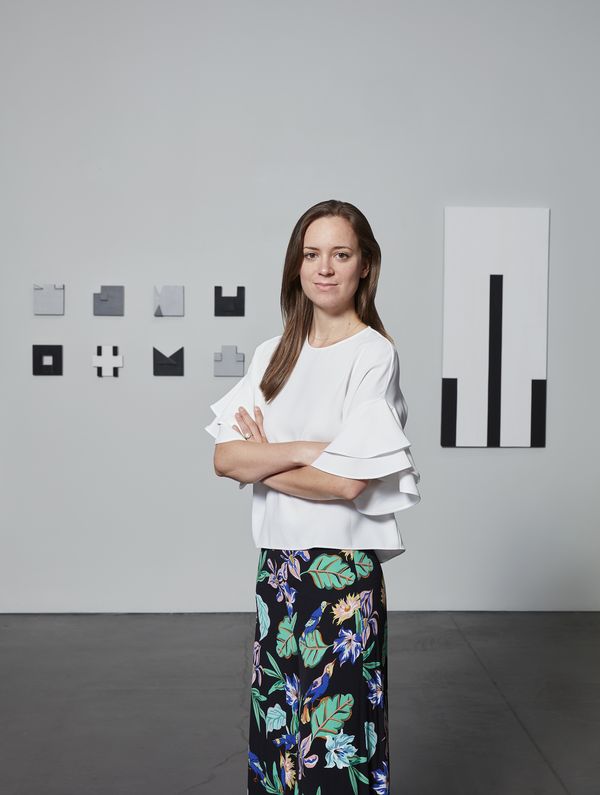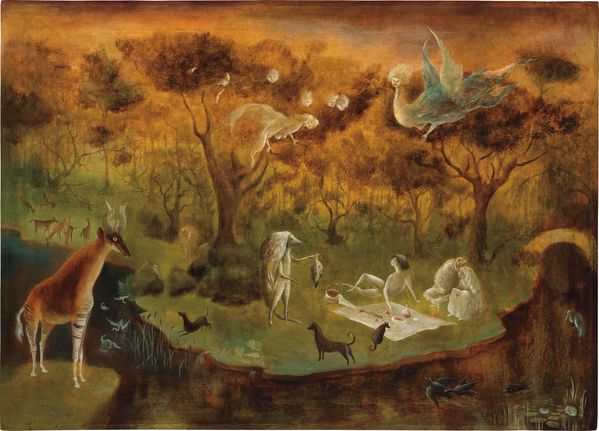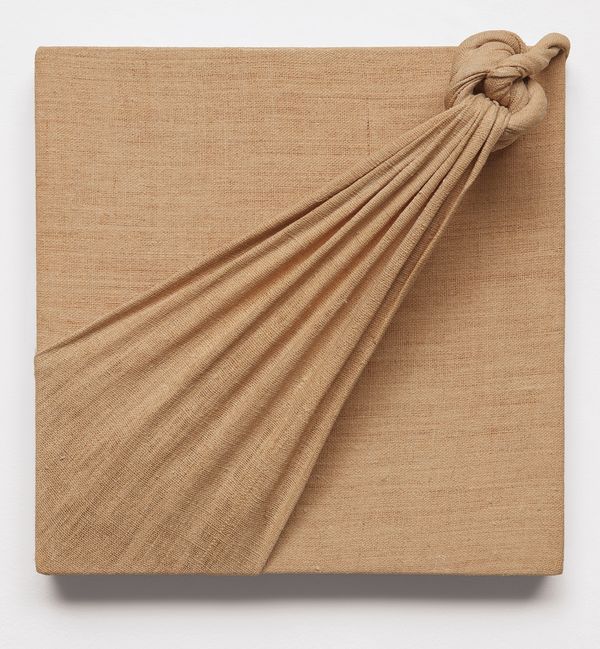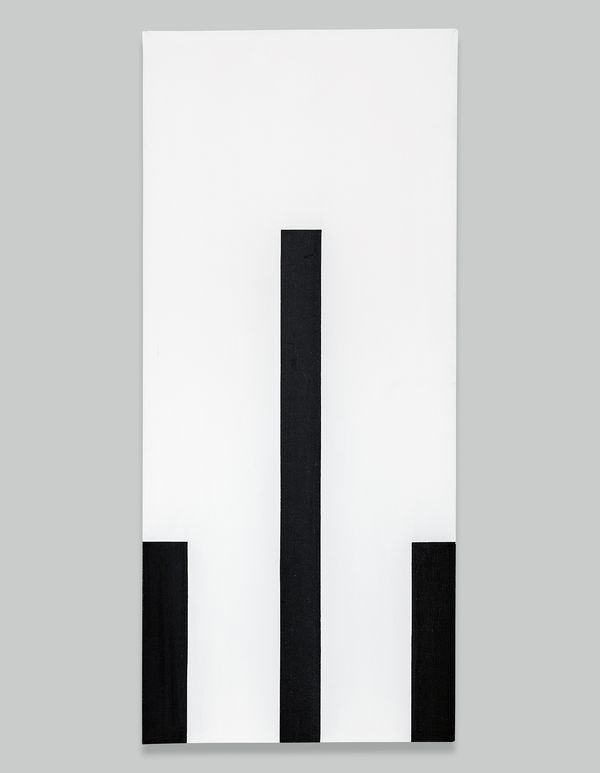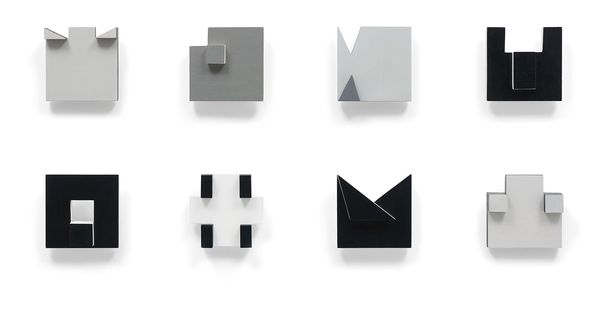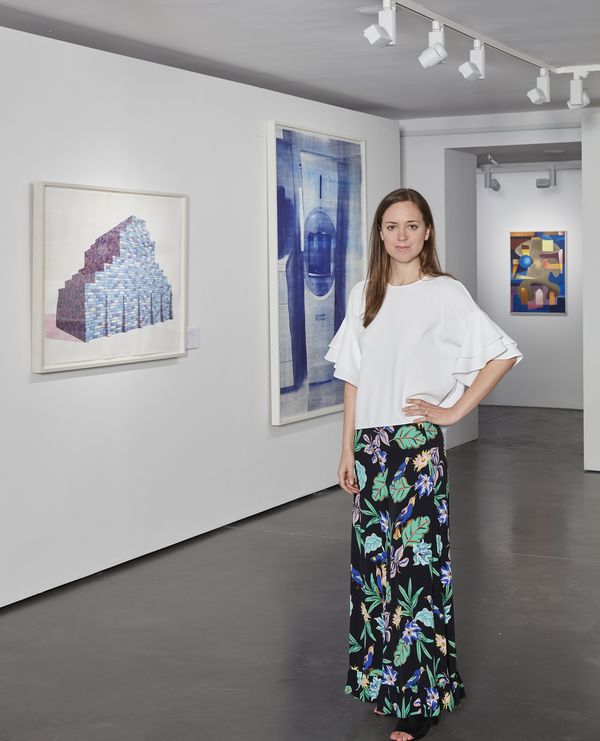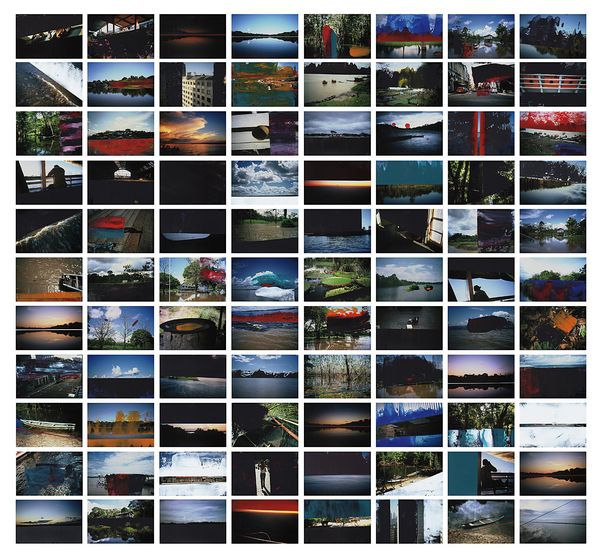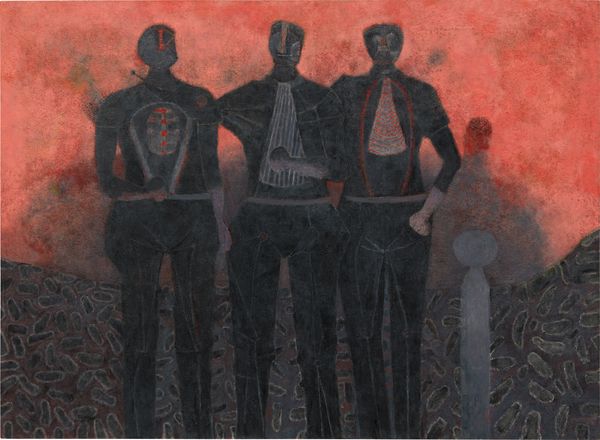Head of Sale, Kaeli Deane, in front of works by Lygia Pape and Carmen Herrera at 450 Park Avenue
Artsy: Can you begin by describing your curatorial vision for the sale and how this selection came together?
Kaeli Deane: Our emphasis is on quality over quantity. Each season we take measure of the market and try to tighten our selection the following season. Phillips has become synonymous with Contemporary Latin American art, but this spring we decided to focus on bringing together an impressive selection of modern pictures in order to breathe new life into this market; we present such artists as Leonora Carrington, Joaquín Torres-García and Hélio Oiticica alongside emerging Contemporary artists, emphasizing their associations with international movements including Surrealism, Constructivism and Concretism.
LEONORA CARRINGTON Pastoral, 1950
A: We love the diversity of works on offer, from medium to scale to subject matter. How do you characterize Latin American art for a collector who is new to the category?
KD: It's impossible to define Latin American art in any one way because we are dealing with many different movements developed across a huge number of countries and cultures. What I find exciting about the category is the possibility of discovery. In our sales, there are always new emerging artists to discover at accessible prices as well as forgotten or under-appreciated modern artists who were at the forefront of avant-garde movements during their time.
JORGE EIELSON Untitled, 1974
For instance, Jorge Eielson, who died in 2006, was essentially unknown a few years ago but has now become a hot new name on the market. His subject matter is intimately involved with his Peruvian heritage and Pre-Columbian art, yet he spent most of his life in Europe. Visually his work is much more comparable to that of artists Lucio Fontana and Alberto Burri than to what his compatriots were producing in Peru in the 1960s-70s.
A: We've seen growing momentum in particular for female Latin artists, with major retrospectives on Lygia Pape at the Met Breuer and Carmen Herrera at the Whitney Museum just in the past year. What sets these artists apart, and why do you think they're finally receiving this recognition now?
CARMEN HERRERA Untitled, 1971
KD: The case is different for each artist. For Carmen Herrera, who is 102 and has been living permanently in United States since the 1950s, it was extremely difficult for her to make a name for herself as a female Latin American artist in New York at that time. Dealers would not give shows to artists like Herrera, despite the fact that she was producing groundbreaking minimal art before many of her male peers, such as Ellsworth Kelly and Barnett Newman.
LYGIA PAPE Livro noite e dia (Book of Night and Day), 1963-1976
Lygia Pape, on the other hand, has been well-known and collected in Brazil for decades, but I believe that her aversion to the market kept her out of the international eye for some time. She pushed the boundaries of European Concrete art as one of the leaders of Neoconcretism in Brazil, a movement that emphasized art’s social obligations and viewer participation. Our work from her famous Book of Night and Day series takes the simple geometric form of the square and breaks it apart into 365 variations, showing a formal relationship to artists like Sol LeWitt even though her exploration relates to the human lived experience and the constantly shifting light cycles of each day of a single year.
There have been extreme efforts by scholars, museums and market-driven institutions like Phillips to shed light on these artists, which collectors have picked up on with fervent enthusiasm. I think, in the age of increasingly frequent art fairs and auctions of contemporary art, sometimes it can actually feel more exciting to focus attention on important artists who have been under the radar for decades.
Kaeli Deane in front of works from FLORA ars+natura
A: Your sale also has a section of contemporary works presented in partnership with FLORA, a Bogotá-based foundation and artist collective. How did that come about?
KD: We have dedicated a lot of effort to Colombian art in the past few sales. So when a friend put me in touch with José Roca, the former curator of Latin American art at the Tate, we were immediately excited to collaborate with FLORA, which specializes in the relationship between art and nature. José did an incredible job curating this section in which all the works were donated by the artists themselves. It includes incredible pieces by Francis Alÿs, Los Carpinteros and Allora & Calzadilla, among others.
There is something for everyone in this section thanks to the range of price points. The proceeds will fund FLORA's artist residencies and educational program, initiatives that I support wholeheartedly.
LUIS FELIPE ORTEGA Mirando a través de algo que parece uno mismo, 2001-2014
A: Do you have one or two emerging Latin artists you are most excited by right now?
KD: I'm not sure it's fair to call Luis Felipe Ortega an emerging artist because he is of the same generation of artists as Gabriel Orozco, but his work just began to be recognized internationally when he represented Mexico in the 2015 Venice Biennale. We have an incredible work by Ortega that features 88 individually intervened photographs in which the artist painted directly onto the snapshots, visually complementing their formal composition while bringing together abstraction with the representative medium of photography.
RUFINO TAMAYO Tres amigos, 1987
A: In contrast, what are iconic examples of the most recognizable 20th century Latin artists presented in your sale?
KD: We are thrilled to include a masterpiece by Rufino Tamayo from 1987 titled Tres amigos. Tamayo was a generation younger than Los Tres Grandes of Mexican Muralism but is equally recognized for transforming the landscape of Modern Mexican art. This painting shows a culmination of over seven decades of artistic production in the artist's life and focuses on the theme of friendship and brotherhood, an important one to Tamayo. The glowing pink of this painting epitomizes his consummate skills as a colorist, and his incorporation of sand in the oil paint lends this work an incredible texture, much like paintings by Jean Dubuffet, that can only be fully appreciated in person.
DAVID ALFARO SIQUEIROS Tehuanas, 1949
We also have an iconic work by David Alfaro Siqueiros titled Tehuanas from 1987. This work depicts a festive celebration of the women of Juchitán in the Isthmus of Tehuantepec in the State of Oaxaca, dressed in their traditional garb. Frida Kahlo brought this indigenous style to the forefront of fashion during the mid-twentieth century, as a celebration of traditional Mexican culture, and it has been iconic ever since.
Last year, we sold Diego Rivera's Baile en Tehuantepec privately for $15.7 million dollars, representing a world record for the sale of a Latin American work of art and thus showcasing the importance of this subject matter. It's also timely to have these two works at auction this year, given the important museum exhibitions of Mexican Modernism that have been at the Dallas Art Museum and Philadelphia Museum of Art.
We are certainly seeing a renewed enthusiasm in this historical genre, and this season’s auction reflects that.
